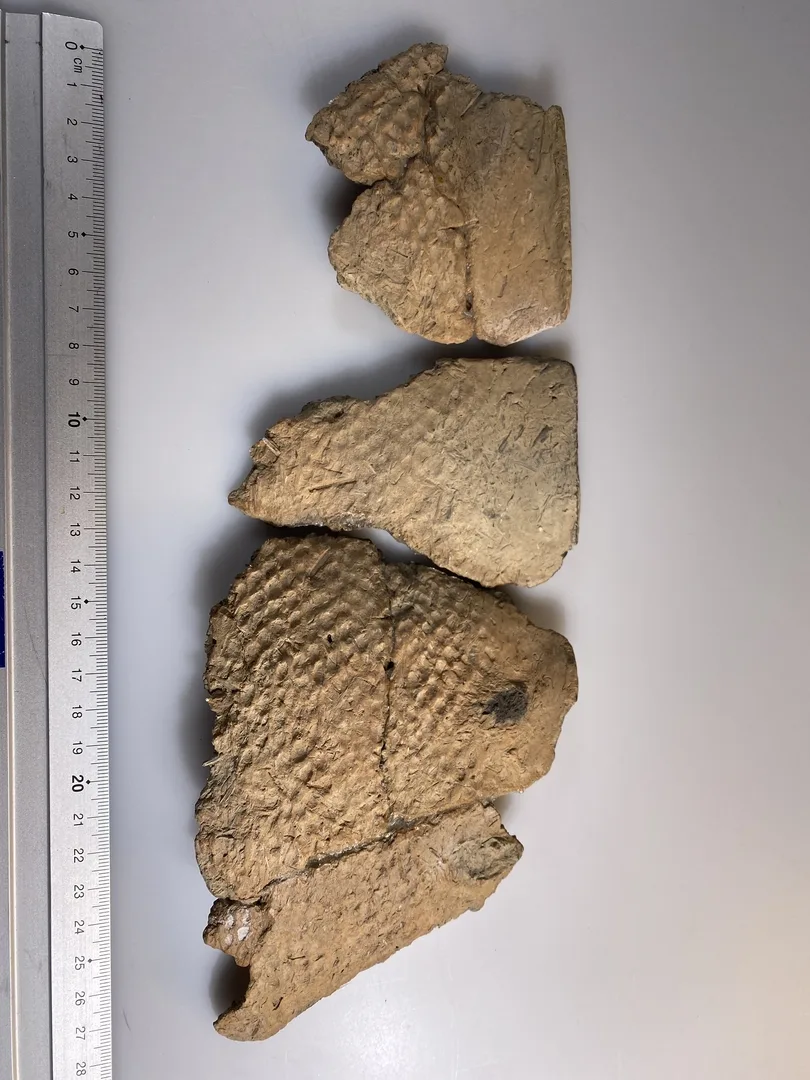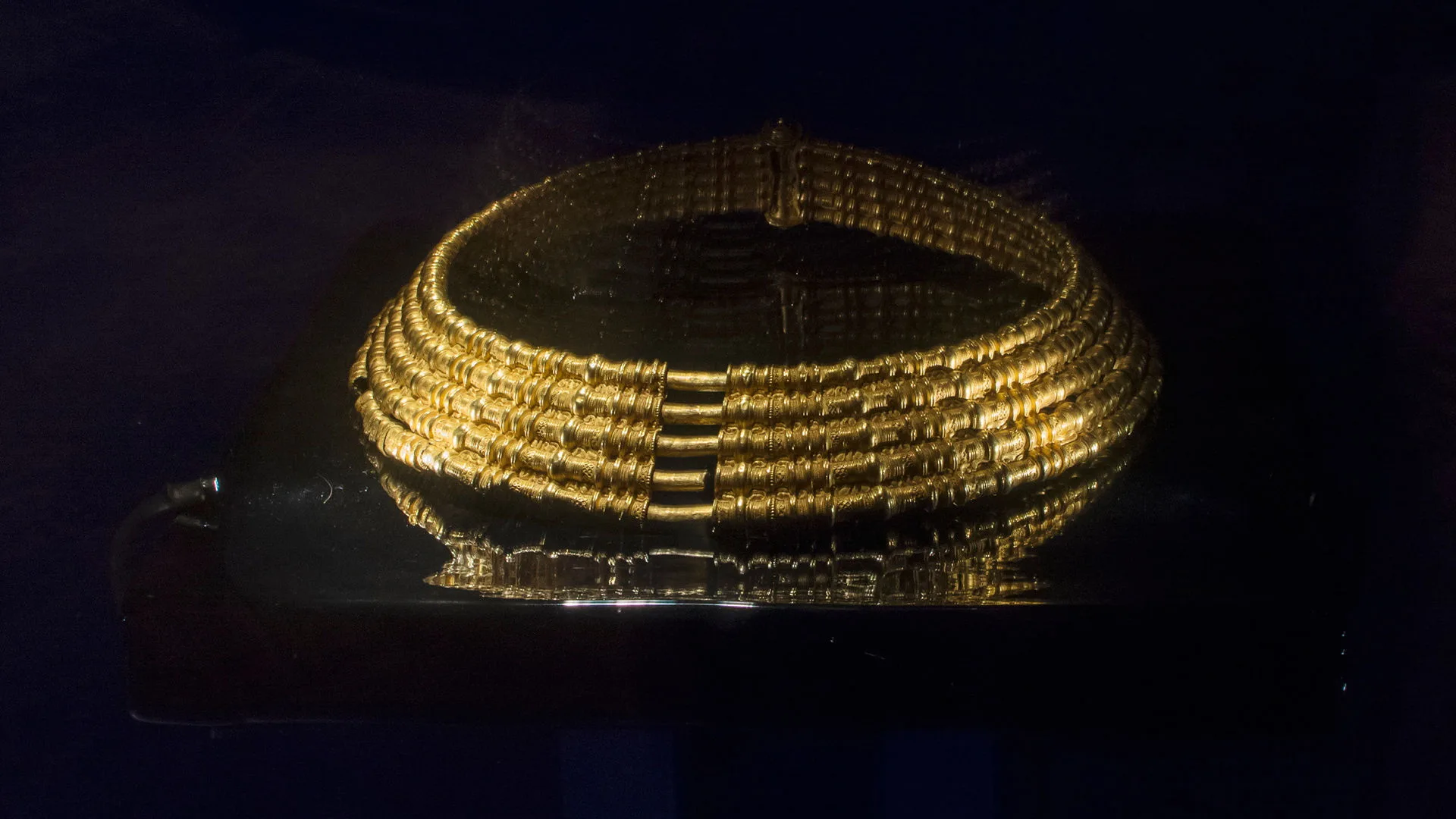Nordic Bronze Age pottery with asbestos
Stone Age
12,000 BC – 1700 BC
Bronze Age
1700 BC – 500 BC
Iron Age
500 BC – AD 1100
At times, the asbestos content was so high that clay was essentially used only as a binder for the fibres. When the vessels were fired, they became lightweight, impact-resistant, and durable. Today, we are aware of the dangers of asbestos fibres, but at the time, the benefits were considered to outweigh the risks.

Vessel
Found in Laisholm, Lilla Laisaren, Lappland.
Pottery was often decorated with patterns of lines, stripes, pits, and incisions. Another distinction from ceramic traditions in the south was that the outer surfaces of vessels were treated with impressions from textiles, plaited materials, or stamps.
One type of surface treatment is known as impressed textile or waffle pottery. This technique appears across large parts of northern Eurasia during the period corresponding to our Bronze Age. Pottery was not imported over long distances; rather, it was ideas about how to shape and design vessels that spread.

Pottery sherd with waffle pattern
Found in Hotingsjön, Ångermanland.





